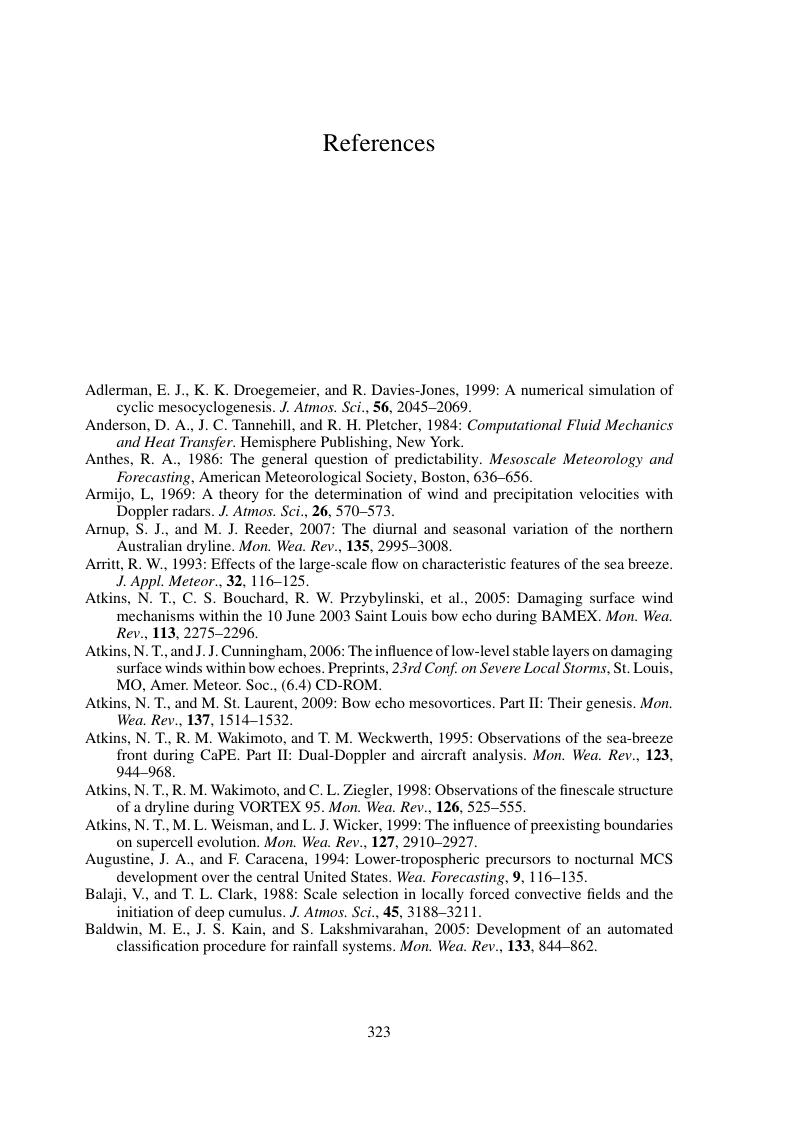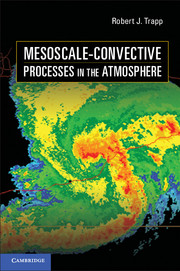Book contents
- Frontmatter
- Contents
- Preface
- 1 The Atmospheric Mesoscale
- 2 Theoretical Foundations
- 3 Observations and Mesoscale Data Analysis
- 4 Mesoscale Numerical Modeling
- 5 The Initiation of Deep Convective Clouds
- 6 Elemental Convective Processes
- 7 Supercells
- 8 Mesoscale Convective Systems
- 9 Interactions and Feedbacks
- 10 Mesoscale Predictability and Prediction
- References
- Index
- Plate section
- References
References
Published online by Cambridge University Press: 05 March 2013
- Frontmatter
- Contents
- Preface
- 1 The Atmospheric Mesoscale
- 2 Theoretical Foundations
- 3 Observations and Mesoscale Data Analysis
- 4 Mesoscale Numerical Modeling
- 5 The Initiation of Deep Convective Clouds
- 6 Elemental Convective Processes
- 7 Supercells
- 8 Mesoscale Convective Systems
- 9 Interactions and Feedbacks
- 10 Mesoscale Predictability and Prediction
- References
- Index
- Plate section
- References
Summary

- Type
- Chapter
- Information
- Mesoscale-Convective Processes in the Atmosphere , pp. 323 - 342Publisher: Cambridge University PressPrint publication year: 2013



